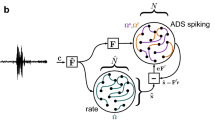Abstract
This paper discusses the current state of the art of industrial neurocomputing, and then speculates on its future.
Three examples of commercial neuro-silicon are presented: the Adaptive Solutions CNAPS system, the Intel ETANN chip, and the Synaptics OCR chip.
We then speculate on where commercial neurocomputing hardware is going. In particular we propose that commercial systems will evolve in the direction of capturing more contextual, knowledge level information. Some results of an industrial handwritten character recognition system created at Apple Computers will be presented which demonstrate the power of adding contextual knowledge to neural network based recognition. Also discussed will be some of the possible directions required for neural network algorithms needed to capture such knowledge and utilize it effectively, as well as results from experiments on capturing contextual knowledge using several different neural network algorithms.
Finally, the issues involved in designing VLSI architectures for the efficient emulation of sparsely activated, sparsely connected contextual networks will be discussed. There are fundamental cost/performance limits when emulating such sparse structures in both the digital and analog domain.
Similar content being viewed by others
References
An Interview with Microsoft's Bill Gates (1992).UPSIDE Magazine.
Ambros-Ingerson, Jóse, Granger, Richard & Lynch, Gary (1990). Simulation of Paleocortex Performs Hierarchical Clustering.Science 247: 1344–1348.
Anderson, James A.et al. (1990). Radar Signal Categorization Using a Neural Network.Proceedings of the IEEE.
Asanovic, K., Morgan, N. & Wawrzynek, J. (1992). Using Simulations of Reduced Precision Arithmetic to Design a Neuro-Microprocessor.Journal of VLSI Signal Processing (In Press).
Baker, Tom & Hammerstrom, Dan (1989). Characterization of Artificial Neural Network Algorithms. In1989 International IEEE Symposium on Circuits and Systems, 78–81.
Bell, Timothy C., Cleary, John G. & Witten, Ian H. (1990).Text Compression. Prentice-Hall.
Boser, B. E.et al. (1992). Hardware Requirements for Neural Network Classifiers.IEEE Micro 12(1): 32–40.
Burges, C. J. C.et al. (1992). Shortest Path Segmentation: A Method for Training a Neural Network to Recognize Character Strings. InThe Proceedings of the IJCNN.
de Vries, Bert & Principe, Jose C. (1991). A Theory for the Neural Networks with Time Delays. In Richard P. Lippmann, John E. Moody & David S. Touretzky (eds.),Advances in Neural Information Processing No. 3. Morgan Kaufmann.
Fukushima, K. (1988). A Hierarchical Neural Network Capable of Visual Pattern Recognition.Neural Networks 1(2): 119–130.
Hammerstrom, Dan (1990). A VLSI Architecture for High-Performance, Low-Cost, On-Chip Learning. InThe Proceedings of the IJCNN.
Holler, Mark, Tam, Simon, Castro, Hernan & Benson, Ronald (1989). An Electrically Trainable Artificial Neural Network (ETANN) with 10,240 Floating Gate Synapses.The Proceedings of the IJCNN.
Hopfield, J. J. (1984). Neurons with Graded Response Have Collective Computational Properties Like those of Two-State Neurons.Proc. Natl. Acad. Sci. USA 81: 3088–3092.
Lanser, A. & Ekeberg, O. (1989). A One-Layer Feedback Artificial Neural Network with a Bayesian Learning Rule.International Journal of Neural Networks 1(1): 77–87.
Paul, D. B. (1991). Algorithms for an Optimal A* Search and Linearizing the Search in the Stack Decoder. InProceedings of the 1991 ICASSP, 693–696, Toronto. IEEE Signal Processing Society, IEEE.
Rabiner, L. R. & Levinson, S. E. (1990). Isolated and Connected Word Recognition — Theory and Selected Applications. In Alex Waibel & Kai-Fu Lee (eds.),Readings in Speech Recognition, 115–153. Morgan Kaufmann.
Ramacher, U.et al. (1991). Architecture of a General-Purpose Neural Signal Processor. InProceedings of the 1991 International Joint Conference on Neural Networks.
Rissanen, Jorma (1983). A Universal Data Compression System.IEEE Trans. Info Theory, IT-29 (5): 656–664.
Williams, Ross N. (1990).Adaptive Data Compression. Kluwer Academic Publishers.
Wilson, Matthew A. & Bower, James M. (1989). The Simulation of Large-Scale Neural Networks. In Christof Koch & Idan Segev (eds.),Methods in Neuronal Modeling, 291–333. MIT Press.
Woods, W. A. (1990). Langauge Processing for Speech Understanding. In Alex Waibel & Kai-Fu Lee (eds.),Readings in Speech Recognition, 519–533. Morgan Kaufmann.
Author information
Authors and Affiliations
Rights and permissions
About this article
Cite this article
Hammerstrom, D., Rehfuss, S. Neurocomputing hardware: present and future. Artif Intell Rev 7, 285–300 (1993). https://doi.org/10.1007/BF00849056
Issue Date:
DOI: https://doi.org/10.1007/BF00849056




